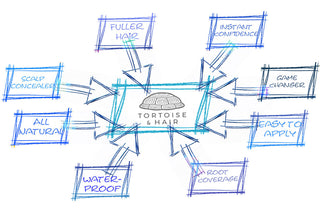Traction Alopecia is a type of hair loss caused by prolonged tension on the hair follicles. This condition is most commonly associated with hairstyles that pull tightly on the scalp, such as braids, ponytails, buns, or extensions. Over time, the constant strain damages the follicles, leading to thinning and, in severe cases, permanent hair loss.
While anyone can develop Traction Alopecia, it is particularly common in individuals who regularly wear tight hairstyles or use styling methods that place undue stress on the scalp. Studies estimate that 32% of women who frequently wear certain styles, such as braids or weaves, may experience Traction Alopecia at some point in their lives.
What Are the Symptoms?
The earliest signs of Traction Alopecia include redness, itching, and discomfort in areas of high tension. These symptoms are often accompanied by thinning or breakage of hair around the hairline, temples, or other stressed areas. Over time, visible bald patches may develop where the tension is most significant.
Unlike other types of alopecia, Traction Alopecia is a progressive condition. If the tension continues, hair loss may become permanent as the follicles become too damaged to produce new growth. However, early intervention can halt the progression and even allow for regrowth.
Common symptoms include:
- Gradual thinning along the hairline or crown.
- Scalp tenderness or soreness after wearing tight hairstyles.
- Hair breakage near the roots in areas under frequent strain.
Can It Be Treated Medically?
Traction Alopecia can often be reversed if addressed in its early stages. However, for cases where damage has progressed significantly, medical intervention may be necessary to restore hair.
- Topical Treatments: Minoxidil may help stimulate regrowth in areas where the follicles are still active. This treatment is more effective if the condition is caught early.
- Platelet-Rich Plasma (PRP) Therapy: This regenerative treatment uses the patient’s own plasma to promote healing and encourage hair regrowth. PRP has shown promise for cases of mild to moderate follicle damage.
- Hair Transplants: For individuals with extensive or permanent hair loss, hair transplantation can restore areas where follicles have been destroyed. This surgical option relocates healthy follicles to bald or thinning areas.
The success of medical treatments largely depends on how early the condition is detected. Addressing the underlying cause—namely, eliminating tension—remains the most critical step.
What Are Options to Help My Thinning Hair Caused by Traction Alopecia?
For those experiencing the cosmetic effects of Traction Alopecia, a variety of non-medical solutions can help create the appearance of fuller, healthier hair while supporting recovery.
Switching to looser hairstyles is essential. Avoiding tight braids, ponytails, or extensions allows the follicles to heal and prevents further damage. Opt for protective styles, such as loose buns or braids, which reduce tension while maintaining a polished look.
Hair fibers, like those from Tortoise & Hair, provide an easy, effective way to conceal thinning areas. These fibers adhere to existing hair, creating the appearance of fullness without causing additional strain on the scalp. They’re particularly useful for areas like the hairline or temples, where thinning is most noticeable.
Wigs and toppers are excellent options for more advanced cases of Traction Alopecia. They offer complete or partial coverage, allowing for endless style possibilities while protecting the scalp. These solutions provide versatility, letting individuals experiment with different looks without risking further damage.
Strategic haircuts can also help disguise thinning areas. A layered cut or shorter style can draw attention away from problem areas and create the illusion of thicker, healthier hair.
Finally, some individuals choose to embrace their new look entirely. Shaving the head can be a bold and empowering move that shifts the focus from hair loss to self-confidence and individuality. Accessories like scarves or headbands can further enhance this style while adding a touch of personal flair.
Finding Confidence with Traction Alopecia
Traction Alopecia is preventable and often reversible with the right care and interventions. Whether you choose hair fibers, wigs, or simply decide to let go of tension-causing hairstyles, the key is taking steps that align with your confidence and comfort. At Tortoise & Hair, we provide tools and support to help you navigate this journey, empowering you to feel confident every day. By prioritizing scalp health and self-expression, you can regain control over your hair and redefine your style on your terms.



